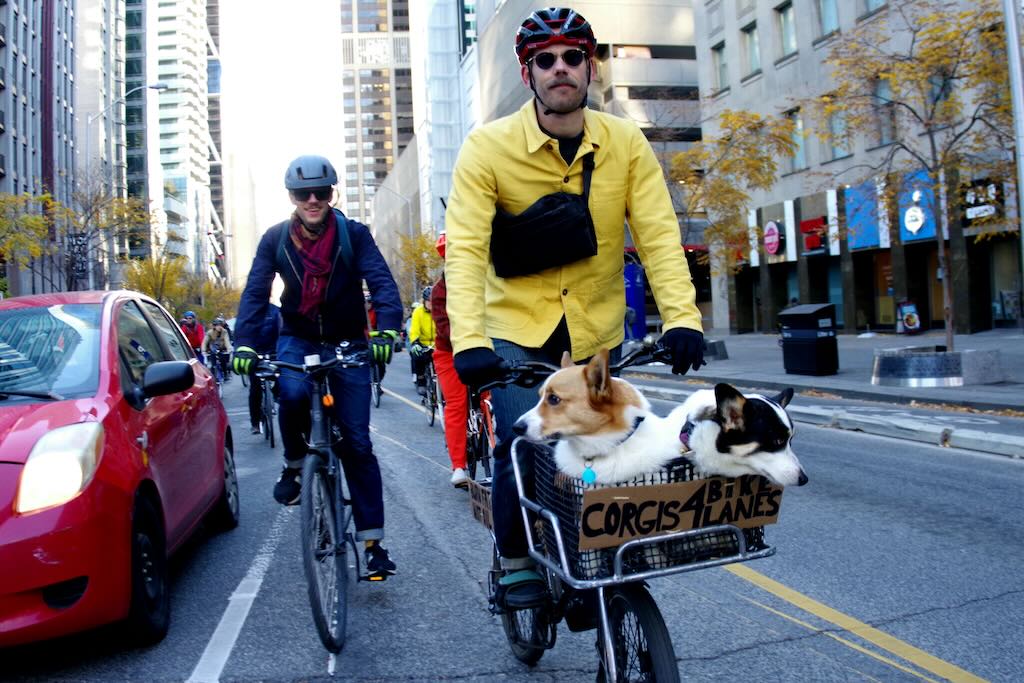Autumn Gear Guide
Find inspiration in our Gear Guide that will keep you out on your bike through wind or rain.
Download NowIf there was ever any doubt that the vast majority of Ontario residents supported safe cycling infrastructure in cities, and not having an overreaching provincial government tell said cities what to do, it can be put to rest thanks to a record number of comments during the public consultation period for Bill 212, the Reducing […]
If there was ever any doubt that the vast majority of Ontario residents supported safe cycling infrastructure in cities, and not having an overreaching provincial government tell said cities what to do, it can be put to rest thanks to a record number of comments during the public consultation period for Bill 212, the Reducing Gridlock, Saving You Time Act, 2024.
In the wake of the Ontario government’s passing of Bill 212, a recently closed public consultation has revealed a significant backlash against the legislation. Despite strong opposition from residents, experts, and stakeholders, the bill—which grants the province authority over municipal bike lane decisions and mandates the removal of key cycling infrastructure in Toronto—was passed on Nov. 25, 2024.
The government has suggested that the removals will begin in March, 2025 at the earliest.
There has been numerous protests and a petition alongside a number of creative artistic protests such as the song “Blame it on the Bike,” and a video game dubbed Loser Lane, since the provincial government announced Bill 212 in the fall.
The legislation requires municipalities to seek provincial approval for bike lanes that involve the removal of traffic lanes and allows the province to mandate the removal of existing bike lanes, such as those on Bloor Street, Yonge Street, and University Avenue in Toronto. The stated aim of the bill is to address traffic congestion and reduce gridlock, which is estimated to cost the Ontario economy $11 billion annually. However, the consultation’s results paint a different picture.
The anti-bike lane legislation passed by the Ontario government saw a record number of comments, over 19,000. Virtually all comments seem to be in opposition. The ERO has released a summary. Meanwhile, in Toronto, decisions are regularly made based on 5-50 public comments. pic.twitter.com/Yk6Hbc1ivJ
— Observing The City (@observinthecity) December 18, 2024
Between Oct. 21 and Nov. 20, the Environmental Registry of Ontario collected an incredible 19,000 public comments. The overwhelming majority reportedly oppose the bill, with some concerns outlined below:
The consultation’s findings reflect a growing divide between the provincial government’s policies and the priorities of Ontario residents, who seem to prefer people-centred planning for neighborhoods as opposed to commuters. While the government frames the bill as a necessary step to reduce gridlock, critics argue it sacrifices long-term solutions for short-term political gains.

Toronto bike lane protest over Bill 212 (photo: @BikeLaneDiary)
“Doug Ford’s plan to ban future bike lanes and remove some existing lanes is a waste of taxpayer money,” said Madeleine Bonsma-Fisher, a Toronto cyclist and parent. “It will not reduce congestion; it will do the opposite by taking away a safe and efficient alternative to driving.”
The bill’s focus on removing bike lanes in Toronto and cracking down on further expansion throughout the province has also raised concerns about equity. As the province prioritizes highway construction and suburban drivers, urban residents are none too amused, especially given the lack of evidence that congestion would improve for commuters.
The passage of Bill 212 has galvanized cycling advocacy groups, who have ramped up protests and campaigns under the banner “Leave Our Lanes Alone.” Many argue that the legislation’s focus on car-centric solutions fails to address the root causes of gridlock, such as underfunded public transit and urban sprawl.
Lead photo: @BikeLaneDiary.
Find inspiration in our Gear Guide that will keep you out on your bike through wind or rain.
Download Now
Leave a comment